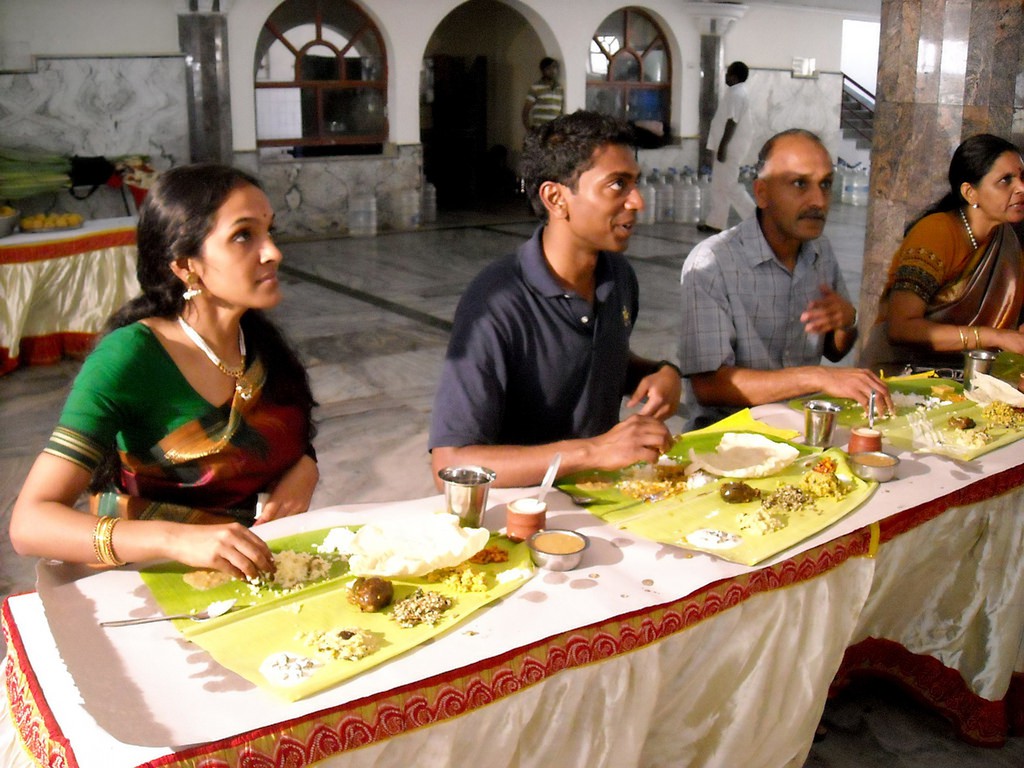About The Author
Hello! From Chuchura (in Hooghly District) and a foodie, I created this blog with a mission to preserve the food of the land; with a message to encourage and promote clean and real food. I hope you enjoy and gain out of this blog, happy reading!
Looking forward to read and hear your feedback.
As the COVID-19 saga continues and lockdown in India enters its fourth phase, it’s time to discuss and deliberate on our eating habits.
The affluent sections of the society that live in both the metropolitan and non-metropolitan cities of India, aped the West to introduce buffets during grand celebrations – birthdays, anniversaries, marriages, etc. This phenomenon started in the closing years of 20th Century.
In the 21st century, the concept of buffet has captured the whims and fancies of every aspiring Indian across towns – big or small. The age-old tradition of being served meals seems to be fast dieing out.
Why I Dislike Buffets?
I have organized dozens of office parties in the past few years and since office budgets always have a limited budget, I am appalled at people’s choice of buffet over ala-carte.
I understand that this fascination of buffet is majorly because of two specific reasons.
- Unlimited offering – You can eat as much as you want, no one’s going to stop you
- Choose Your Pick – You are free to walk down to the station, choose the food you like and help yourself with additional helpings
The primary reason why I always detest organizing office buffets is quality. On a limited budget, seldom do restaurants deny serving a buffet with a considerable spread. The result is poor quality – lack of flavors and unappetizing services. Sadly, I have to give in and organize such spreads because of the sheer demand.

But then I also encounter buffets outside office parties.
Unlike the limited budget that an office dinner has, buffets otherwise have a considerably higher budget. Some of these numbers are mind boggling.
For example, when I was in college, I was told that the wedding of the Chairman’s daughter consisted of a huge spread of 200 plus dishes and drinks. Unfortunately, we were not invited, which is a story for another day.
Even in such places I have a particular dislike for buffets. And the reasons are many.
Indian Food
Most buffets across India have dishes majorly from Indian cuisine. Indian cuisine is gravy-based and staples are mostly eaten using hand and fingers, rather than fork and spoons.
I notice many people use their hands in a buffet, which is fine. But then they would grab a tissue, use it in haste, and walk off for another helping. The result in many such cases are ladles with food all over!
Indian food isn’t fit for buffet.
Lack of Discipline and Ethics
As I have already pointed out, we are not trained for buffet. Neither do we understand, practice and accept the principles of buffets. Nor is our cuisine fit for buffets.

Let me site a few unwritten rules here:
- If you are planning to revisit the service stations, you should not take too much food at a time
- Do not waste food
- Observe basic food hygiene rules
- Do not reuse the plate for additional serving
Unfortunately, in most cases the diners do not follow these rules. And the restaurant or catering staff are oblivious to encouraging the guests to follow these rules.
Talking about restaurant management (and otherwise), I find two things specifically annoying.
- Insufficient napkins and towels – With everyone serving themselves, spillage is very common. Why would you not keep enough towels and napkins to help recover from a spill?
- Lack of seating space – I understand that buffets are casual in nature, but that does not mean you would not have enough chairs and tables.
The result is an unpleasant experience.
Poor Crowd Management
Crowd management during a buffet is largely poor in India.
The idea is that of an informal dining. And since people are expected to move around, no one would ask the diners to move away from the serving station, lest they sound rude.
Not to forget, many suggest and organize buffets to make up for space constraints – tables and chairs take up a lot of space. So let the diners stand and you can squeeze in more guests without paying for the space.
Not Guest Centric
The traditional way of feasting in India has been very guest-centric.
Your guests sit down, and the catering staff would go around serving food. The staff would repeat food multiple times and the guest can always request for more.
It is customary for the host to go around a couple of times meeting the guests to ensure that they eat their heart out!
In a buffet, the host would not find it feasible to move around asking his guests because they are always on the move. Of course, every time I notice more people standing and struggling with their plates.
Frankly speaking, I have rarely enjoyed buffets.
How Does Coronavirus Impact Buffet?
To prevent coronavirus, governments across the world have resorted to three tactics.
- Wearing masks in public has been made compulsory
- Hygiene has been declared of paramount importance
- Practicing social distancing has been made into a law
In such circumstances, the big question to ask is whether buffets are feasible, hygienic and practical.
The problems with buffets are now aplenty. But can be largely categorized into two categories.
Touch Points
Touch points in a buffet would be the serving stations. The cutlery – plates, spoons, bowls, ladles, tissue papers, etc.
Each of these items are touched or handled by multiple guests – one after the other. It is practically not feasible to sanitize each of these after every use by a guest.
Touch points are excellent medium for the virus to find a new host.
Touch Agents
Touch agents are the guests and the servicing or catering team.
As a precaution, the organizer can do a temperature check for the catering staff – cook, service men, cleaning staff, etc. The same check can also be applied to guests but there still might be individuals who are asymptomatic.
Note: As I write this, more than 85% of cases in India are asymptomatic
When a touch agent is asymptomatic, he or she can very easily, unknowingly spread the virus among the guests present while handling the cutlery.
While it is best to avoid such gatherings, the virus isn’t going away any soon. Which means, you will have to take precautions to ensure that the dinner does not result in your guests catching the virus.
Better to Get Traditional
Surely, buffet is not the best way to dine anymore.
It’s high time to look back, and go to the roots. To follow the traditional way of eating where people would squat on the floors and dedicated catering staff would serve everything from plate to a glass of water and from salt to biryani and desserts.
Don’t worry about squatting. You can also replace that with tables and chairs so that your guests can sit comfortably.

Using this arrangement, you can also implement social distancing. You need to move the tables and chairs, not human beings. And that’s easier to do.
A better way of feasting is to allow the catering staff serve you food. You can always say a ‘No’ or request for another helping.
This helps to minimize the touch points as well. Instead of having hundreds of guests touching the same serving spoon, you have a dedicated staff who have been certified fit and free from the virus.
At the same time, your guests are taken care better. There is no standing, there’s no discomfort handling the plates, curries are easier to manage.
What do you think? Is there a better way to have a feast? Do share in the comments section.

